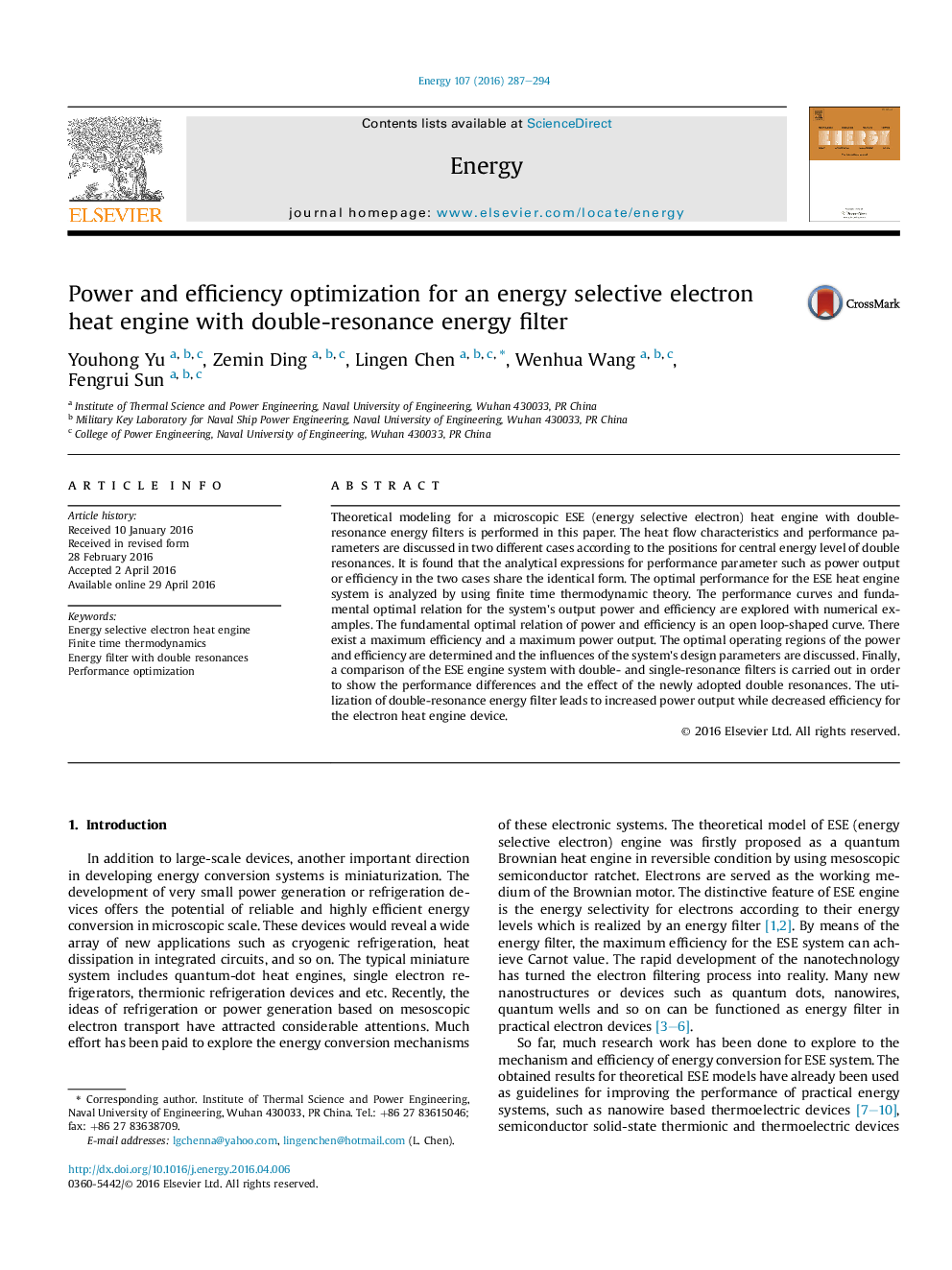| Article ID | Journal | Published Year | Pages | File Type |
|---|---|---|---|---|
| 1730838 | Energy | 2016 | 8 Pages |
•Theoretical modeling for an ESE heat engine is performed.•It is with double-resonance energy filters in this paper.•Power output and efficiency are derived and optimized.•Performance comparison single-resonance filters is carried out.
Theoretical modeling for a microscopic ESE (energy selective electron) heat engine with double-resonance energy filters is performed in this paper. The heat flow characteristics and performance parameters are discussed in two different cases according to the positions for central energy level of double resonances. It is found that the analytical expressions for performance parameter such as power output or efficiency in the two cases share the identical form. The optimal performance for the ESE heat engine system is analyzed by using finite time thermodynamic theory. The performance curves and fundamental optimal relation for the system's output power and efficiency are explored with numerical examples. The fundamental optimal relation of power and efficiency is an open loop-shaped curve. There exist a maximum efficiency and a maximum power output. The optimal operating regions of the power and efficiency are determined and the influences of the system's design parameters are discussed. Finally, a comparison of the ESE engine system with double- and single-resonance filters is carried out in order to show the performance differences and the effect of the newly adopted double resonances. The utilization of double-resonance energy filter leads to increased power output while decreased efficiency for the electron heat engine device.
